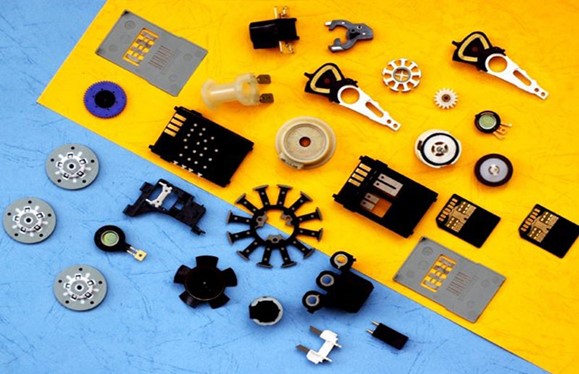Are you in search of a manufacturing process that can produce highly-complex, accurate small parts quickly and cost-effectively? If so, micro-injection molding may be your perfect solution. Injection molding is among the most popular techniques used to mass-produce plastic parts for countless applications.
However, not all production requirements call for large plastic components; smaller parts are often needed for components or assemblies that fit tight spaces or other precise demands of modern technologies.
Micro-injection molding utilizes injection mold technology but gives manufacturers additional control over the entire process by allowing them to create detailed designs on an even smaller scale than traditional injection-molded products.
What is Micro-Injection Molding and Why Is It So Popular
Micro-injection molding is a revolutionary technology that is making waves in the manufacturing industry. It involves the production of parts and components on a micro scale using precision injection molding techniques.
The popularity of this technology is due to the fact that it allows for producing high-quality, complex parts while minimizing waste and reducing costs.
Additionally, the process is highly repeatable and offers exceptional precision, making it ideal for producing small and intricate parts in various industries, such as medical and electronics.
With micro-injection molding, manufacturers can now produce small and intricate parts quicker and with greater efficiency, offering endless possibilities for innovation and growth.
Benefits of Micro-Injection Molding Compared to Traditional Methods
When it comes to producing small, intricate parts, micro-injection molding has proven to be the superior choice over traditional methods. One of the biggest benefits is the ability to create complex shapes with high precision and accuracy, delivering consistent results with every production run.
Additionally, the use of smaller machines and tooling means lower production costs, making it a more cost-effective option overall. Another advantage is the ability to incorporate multiple materials or colors into a single piece, thanks to the ability to switch out materials quickly and efficiently.
And with advancements in automation and technology, micro-injection molding can offer faster cycle times and increased efficiency, making it the clear choice for those seeking to optimize their manufacturing processes.
The Equipment Needed for a Successful Micro-Injection Molding Project
Having the right equipment is essential for a successful project when it comes to micro-injection molding.
The process requires precision and attention to detail, and the equipment used must be able to accommodate the small size and complexity of the parts being produced. No detail can be overlooked From the molding machine to the hot runner system.
It’s important to ensure that all components work together seamlessly to achieve the desired outcome. With the right equipment and expertise, micro-injection molding can produce parts with incredible accuracy and consistency, making it a valuable tool in the manufacturing industry.
Design Tips for Creating Parts That Will Withstand the Injection Molding Process
When it comes to injection molding, designing parts that can withstand the process takes careful consideration and attention to detail.
There are many factors to consider, such as choosing the right materials, creating a proper design, and ensuring the parts are strong enough to withstand the force of the molding process. It’s important to work closely with your manufacturer to ensure the design meets the requirements and can be produced efficiently.
With these key design tips, you can create parts that will not only survive the injection molding process but will also meet your desired specifications.
Challenges Associated with Micro-Injection Molding and How To Overcome Them
Micro-injection molding is a highly precise and delicate process that allows for the production of small plastic parts with complex geometries. However, it comes with its own set of challenges that can impede the quality and efficiency of the manufacturing process. One major challenge is the potential for material loss during injection due to the small size of the mold cavity.
This can be overcome by using optimized mold designs and carefully adjusting the injection parameters. Maintaining consistent process parameters is also crucial, which can be achieved through frequent monitoring and adjustment. Micro-injection molding can produce high-quality results with minimal waste with the right techniques.
Examples of Companies Using Micro-Injection Molding to Create Complex Parts
As technology continues to advance, micro-injection molding has become a popular technique among manufacturers to create complex parts. Numerous companies have adopted this method, allowing them to produce small, intricate components even with a limited quantity of materials.
Micro-injection molding is perfect for creating small parts that have intricate geometries at high volumes. For instance, some of the parts being created include tiny medical devices, microelectronic components, and even small car parts.
The process uses molds made from high-tech materials, allowing for high tolerances and precision. This method is not only cost-effective, but it also ensures consistent quality and efficiency for production lines.
Many companies are witnessing significant benefits from the use of micro-injection molding, which promises to drive innovation and growth in numerous industries.
Micro-injection molding is an incredibly popular and necessary tool for many different industries, from electronics to automotive and beyond. It allows for complex parts to be made much cheaper, faster, and with more precision than traditional injection molding methods.
While it takes some specialized equipment and experts to make sure the process runs smoothly, with a good design and a few tricks up your sleeve you can create reliable parts at scale reliably.
Of course, there are some challenges associated with the process that will need to be overcome in order for successful results but fortunately, there’s plenty of resources out there that can help you get started.




